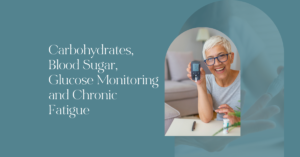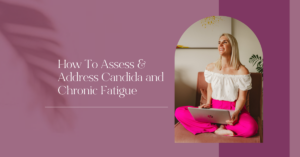Mood disorders refer to significant changes in mood that have a negative impact on daily life. It goes without saying that when someone experiences a chronic illness such as Chronic Fatigue, they may feel low at times.
However, this is different to someone who may be experiencing an ongoing low mood that feels unrelated to their current state of health or someone who is experiencing a low mood disorder that is perhaps mechanistically entangled with some of the mechanisms of chronic fatigue.
In this particular post, I will discuss the different types of low-mood disorders and how we can approach support for these alongside the journey of improving health and energy as a whole.
Types of Depression & Low Mood
Depression is a mood disorder characterised by persistent feelings of sadness, hopelessness, and a lack of interest or pleasure in daily activities. It can affect a person’s thoughts, emotions, and physical well-being, leading to changes in sleep, appetite, energy levels, and concentration. Depression can interfere with daily functioning and often requires treatment, such as therapy, medication, diet and lifestyle changes, supplements or a combination of all of these.
There are several types of depressive disorders which are detailed below. Collectively I will refer to these as “low mood”.
Major Depressive Disorder
Symptoms include low mood, low self-esteem, loss of interest and low energy consistently for at least a two week period. May also include significant weight loss or gain, a slowing of thought, reduction in physical movement, recurrent thoughts of death and suicidal ideation without a specific plan for committing suicide. The pathophysiology is often impaired activation of the pre-frontal cortex.
Minor Depressive Disorder
Minor depressive disorder does not meet the full criteria for major depressive disorder. They may rather have similar symptoms but less of them. The pathophysiology is also impaired activation of the pre-frontal cortex.
Recurrent Brief Depression (RBD)
RBD may be characterised by intermittent depressive episodes not related to the menstrual cycle in women. Usually occurring for 5-7 days, 6 to 12 times per year. Although brief, these episodes may be several with suicidal ideation and impaired function. The pathophysiology may involve impaired activation of the pre-frontal cortex and limbic networks of the brain.
The intermittent nature of RBD can suggest neuroinflammation and/or glial cell priming which is being activated by intermittent systemic triggers.
Premenstrual Dysphoric Disorder (PMDD)
This is a mood disorder characterised by emotional, cognitive and physical symptoms during the luteal phase of the menstrual cycle. Although many women may experience mild mood changes or discomfort around their cycle about 5-8% of women may experience severe premenstrual syndrome which impairs their ability to function. Symptoms will then resolve with the onset of menstruation. The pathophysiology may involve increased sensitivity of the limbic networks to hormone fluctuations.
Season Affective Disorder (SAD)
This is a mood disorder where people who have normal mental health throughout most of the year, exhibit depressive symptoms at the same time each year. Usually this is in the winter but it is also possible in the Autumn, Spring and Summer. SAD is a type of major depressive disorder. The pathophysiology may be due to impaired pineal and involve limbic networks.
Underlying Causes of Mood Disorders
There can be many causes of low mood and the biological imbalances that contribute to low energy may overlap with biological imbalances that can create mood disorders.
When supporting low mood, we want to consider two broad categories; Psychological and/or Physiological. The focus of this blog is on the physiological mechanisms and how they can be supported. However it is important to acknowledge the relationship between the two and in some cases, individuals may be impacted by both.
A psychological mood disorder may be based in psychological mechanisms, for example:
- Loneliness
- Divorce
- Financial Stress
- Relationship problems
- Loss of a loved one or pet (or health)
- Lack of self worth
- Lack of life purpose
- Unhappiness or guilt about life decisions and the way life has turned out
Although these may be psychological in nature, they will have a biological impact by generating a chronic physiological stress response. This in turn can be a driver of physiological mechanisms, which we can support with things like diet, lifestyle and supplements, however, the root cause is a psychological issue.
Activation of Prefrontal Cortex and Limbic System
In many cases, low mood or depression is the result of a decreased activation of the Prefrontal Cortex and Limbic System. Therefore, stimulation to these regions of the brain could be supportive for those who experience depression, low mood or other conditions such as SAD and PMDD.
Both the prefrontal cortex and limbic system can be stimulated by:
- Food
- Physical exercise and movement
- Cognitive Tasks / Challenge
- Social Relationships
- Visualisation
- Music
All of which activate neurotransmitters, growth factors and opioids which can improve mood, motivation, concentration and passion.
The catch is that these are many things people take away when they have a chronic illness or chronic fatigue experience. We may start to follow restrictive diets, limit social interactions, fear movement because of post-exertional malaise and avoid cognitive stress and challenges. Some people may experience sound sensitivity and therefore listening to music could even be problematic.
We may have to work on stabilising the body and improving brain health before we can expand and introduce more of these things in our life. However, the magic is in the dosage and the best dosage is what we can tolerate. Even very small amounts of movement, social interaction or cognitive challenge, could be supportive for improving mood long term.
Visualisations can be a very powerful tool which is why brain retraining programs can be very successful for people who do not have access to many of the other things on this list.
Duration of the Mood Disorder
The duration of the experience can help to identify the possible mechanisms for low mood and also the potential prognosis for improvement.
For example, if someone has been experiencing low mood for 6 months or less, there may be a better prognosis than someone who has been experiencing low mood for their whole life.
Recent changes in mood may be associated with:
- Psychological stressors
- Hormone imbalances
- Circadian Rhythm imbalances
- Microbiome imbalances
- Nutrient deficiencies or imbalances
- Sleep disorders
- Sedentary Lifestyle
When mood disorders are intermittent or relapsing (e.g. PMDD, RBD), they may be associated with:
- Neuroinflammation
- Autoimmunity
- Thyroid Dysfunction
- Hormone imbalances
When mood disorders are chronic they may be associated with:
- Brain Injury
- Neurodegeneration
- Undiagnosed metabolic condition
The goal in functional medicine is to determine the underlying mechanisms which may be contributing to low mood and then work towards addressing them. In cases where the underlying causes may be resistant to interventions the main goals will be optimise neurochemistry as much as possible and improve stress resilience as a whole to improve and/or maintain quality of life as best as possible.
Foundations For Mood Disorders
Irrespective of what someone’s mood disorder may be, there are important foundations that may help to improve neurochemistry and stress resiliency, which is how we cope with stress.
There are five pillars of consideration:
- Physical exercise and cognitive activity
- Sleep and circadian rhythms
- Blood glucose stability
- Managing inflammation and reducing oxidative stress
- Microbiome health
Physical Exercise
Exercise can be a double edged sword in someone with Chronic Fatigue due to post-exertional malaise and energy crashes. However, if someone can find the right dosage of movement and exercise there can be many benefits. These include:
- Increasing brain derived neurotropic factor (BDNF and opioids which are natural mood enhancers
- Increasing levels of neurotransmitters such as dopamine, serotonin, epinephrine and acetylcholine
- Optimising the activity of the limbic circuits of the brain
- Increasing blood flow to the brain which is supportive for brain health and neuroinflammation
- Supporting mitochondrial biogenesis which is the development of new mitochondria
- Activating neuron branching
It is a cruel paradox, but finding a movement routine, however big or small, is essential to creating the changes necessary for long term physical and mental health.
The general guidance is: Do whatever it is that allows you to recover and repeat the same the next day.
This could start with some gentle stretches in bed, to a 5 minute walk around the block, to some gentle qigong or yoga to more intense movement as your capacity builds.
There may be some trial and error in the beginning, so be prepared to make mistakes and learn from them. In some cases, we need to improve the health of the brain and antioxidant systems before movement can progress. Working with a practitioner can be useful when it comes to knowing what to do and when.
I have written more about movement here and here.
Sleep and Circadian Rhythms
Sleep is when the brain regenerates, When we don’t sleep, our brains get inflamed, our neurochemistry becomes unstable and we experience heightened sympathetic responses.
It is not just about how much we sleep but meeting the following criteria:
- Sleeping in a rhythm which means going to bed at the same time each day and waking at the same time each day. Which means being able to:
- Fall asleep
- Stay asleep
- Wake feeling rested
It is also important that all individuals establish a health cortisol awakening response (CAR). In a healthy individual, cortisol is released in a rhythmic pattern that aligns with your circadian rhythm. It should peak an hour after waking, known as the cortisol awakening response. Then, it should naturally decline across the day so that it falls to its lowest point at about 2am.
Research suggests that people with depression, including those with SAD, often experience altered cortisol secretion patterns. This may include a blunted or delayed CAR, which could impact mood, energy levels, and overall well-being.
In SAD, the lack of sunlight during the winter can disturb the body’s internal clock, affecting sleep patterns, hormone production, and other bodily functions. A disrupted circadian rhythm may also alter the timing and magnitude of the CAR.
CAR is something that can be assessed using a saliva test. Disturbed circadian rhythm and CAR could be an underlying mechanism in mood disorders. If you have tested your CAR and know that it is low or if you suspect that it is low, here are some actions you can take:
- View bright light within the first 30-60 minutes of waking:
- 3 minutes on a sunny day
- 10 minutes on a partly cloudy day
- 20-30 minutes on a cloudy or rainy day
- If you wake up before sunrise, expose yourself to bright lights or ideally a 10 000 LUX light and then get outside later in the day.
- Take a cold shower of do a cold plunge within the first 30-60 minutes of waking
- Do some high intensity exercise for 10 minutes on waking
Some of these options are not accessible to everyone and therefore we have to pick our battles. If circadian rhythms are disturbed it can also be helpful to get as much natural daylight as possible, especially in the winter months, and keep lights low and dim after sunset.
Blood Glucose Stability
Stabilising mood requires stabilising blood sugar. When blood sugar drops low, there is a surge in adrenal hormones such as cortisol, epinephrine and norepinephrine. This increases activation of the amygdala.
When blood sugar is too high, this means that glucose isn’t able to get into cells and energise the brain. This can impact overall brain health and mitochondria function i.e. there isn’t energy available for healthy brain function.
Additionally, we need proper insulin signalling to activate the synthesis of neurotransmitters. Surges in insulin associated with poorly balanced blood sugar will negatively impact dopamine, serotonin, GABA and acetylcholine production.
People with high blood sugar may still experience low blood sugar and vice versa, therefore, stability is the goal, but the approach may be different. I have written about addressing both in more detail, but here are some benchmarks to work from.
| Strategies for High Blood Sugar | Strategies for Low Blood Sugar |
| Eat protein, fat and fibre at every meal Limit portion size to prevent energy dips after meals Fast at least 12 hours overnight Avoid fruits and refined sugars Avoid stimulants Manage stress Get adequate sleep | Eat as often as required to prevent energy dips before meals Eat protein, fat and fibre at every meal Eliminate fruits and refined sugars Avoid stimulants Manage stress Get adequate sleep Support the adrenal glands Implement a ketogenic diet if necessary |
Managing Inflammation and Reducing Oxidative Stress
Inflammation in the body comes from food, toxins, microbes (infections) and trauma. This means that, simplistically, eating an anti-inflammatory diet, reducing toxin exposure and supporting detoxification and drainage, addressing infections whether that be a gut infection, SIBO, mould, candida, a parasite or something else and working on stress and trauma will all be supportive of mood.
This is a massive topic in and of itself but ultimately the way that it can be supportive for mood is that systemic inflammation (inflammation in the body) can be a trigger for inflammation in the brain (neuroinflammation).
By addressing systemic inflammation we can support neuroinflammation and this will be supportive of low mood and depression.
Microbiome Health
The gut is often referred to as the second brain and many of our neurotransmitters are manufactured in the gut. Therefore, it goes without saying that poor digestive health may be connected to poor mood.
The gut is another complex area which deserves a blog or several blogs committed to a more thorough discussion.
The digestive system should be addressed from North to South depending on the individual imbalances with which someone presents. This is something that I cover in more detail in my Gut Health Mini Course. A brief summary includes:
- Supporting the nervous system and vagal tone for proper digestion
- Adequate chewing; 30-40 chews per mouthful
- Ensure stomach acid production is adequate; this will impact digestive pH which influences the balance of bacteria in the gut
- Ensure adequate production of pancreatic enzymes; low levels may be impacted by the health of the small intestine which includes small intestinal bacterial overgrowth (SIBO), intestinal permeability, pancreatic health and parasympathetic tone
- Ensure healthy gallbladder function
- Healthy Microbiome which means a good balance of bacteria in the gut.
One of the most important factors to consider where mood is concerned, is ensuring the diversity of bacterial species in the gut which is encouraged by a diet which is diverse in plants.
Something that I encourage my clients to do is a “Microbiome Mash Up”. This is a blend of small amounts (¼ cup) of different vegetables mixed with a little bit of water and taken like medicine each day.
I usually recommend that clients use a food processor to chop up a selection of vegetables (15 to 20 different types) and freeze them in portion sized packets or jars. Each day they can remove their frozen vegetables from the freezer and blend with a little water, possibly even some additional seeds such as chia, flax, hemp or psyllium husk if tolerated.
Here is a video on YouTube which describes the concept.
This can be a lot of work, especially when fatigued, in which case I encourage a diversity of plants throughout the day, 20 different types if possible and at least 30 across the week.
Addressing Underlying Mechanisms
Addressing these first five foundations can, in some cases, go a long way to improving someone’s mood. However, there may also be underlying mechanisms over and above these foundational ones that could be supportive if mood challenges are ongoing.
Each of these areas deserve a separate blog in their own, right, many of which have already been covered, they include:
- Addressing Hormone Imbalances
- Addressing Thyroid Imbalances
- Addressing Neuroinflammation and Brain Health
- Addressing Neurotransmitter Imbalances
- Addressing infections such as mould, parasites, candida
- Addressing toxic load including chemicals, mycotoxins, heavy metals or toxins from bacteria such as LPS (e.g. endotoxemia)
Conclusions
Managing a low mood condition and a low energy condition simultaneously can be challenging. Mostly because the very nature of both leaves the individual under-resourced with energy and motivation to take the supportive actions required.
However, the good news is that the underlying mechanisms are very likely interlinked and therefore you do not need a separate strategy for each component, supporting one may well support the other.
Health can sometimes feel complex and confusing, which is why starting with basic foundations is also the best place to begin. As energy grows and mood lifts over time there may be more capacity to take on bigger challenges.
If you want or need further help and support, consider working with us.









